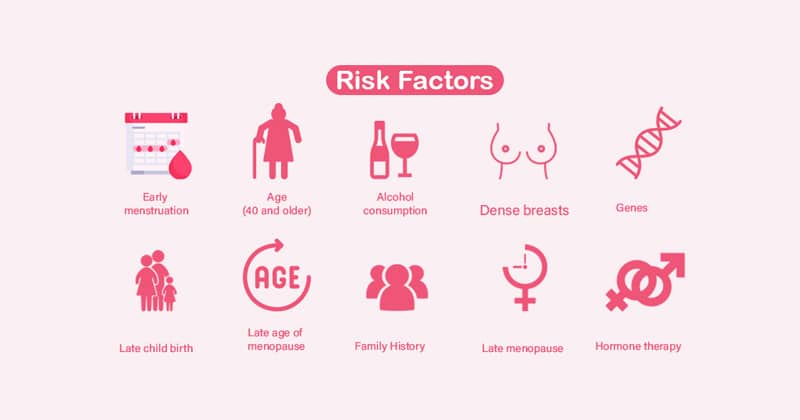Every minute, somewhere in the world, a woman dies from breast cancer. That’s more than 1,400 women every day. Breast cancer happens when cells in the breast grow and divide in an uncontrolled way, creating a mass of tissue called a tumor.
World Health Organization and the Cancer Community are responding with renewed urgency to address breast cancer and to respond to the growing breast cancer globally that is straining individuals, communities, and health systems.
Studies have shown that your risk for breast cancer is due to a combination of factors. The main factors that influence your risk include being a woman and getting older. Some of the risk factors which you cannot change are:
- Getting older-The risk for breast cancer increases with age; most breast cancers are diagnosed after age 50.
- Genetic mutations-Inherited changes (mutations) to certain genes, such as BRCA1 and BRCA2. Women who have inherited these genetic changes are at higher risk of breast and ovarian cancer.
- Reproductive history-Early menstrual periods before age 12 and starting menopause after age 55 expose women to hormones longer, raising their risk of getting breast cancer.
- Having dense breasts- Dense breasts have more connective tissue than fatty tissue, which can sometimes make it hard to see tumors on a mammogram. Women with dense breasts are more likely to get breast cancer.
- Personal history of breast cancer or certain non-cancerous breast diseases- Women who have had breast cancer are more likely to get breast cancer a second time.
- Family history of breast or ovarian cancer- A woman’s risk for breast cancer is higher if she has a mother, sister, or daughter (first-degree relative) or multiple family members on either her mother’s or father’s side of the family who has had breast or ovarian cancer. Having a first-degree male relative with breast cancer also raises a woman’s risk.
Different people have different symptoms of breast cancer. Some of the signs and symptoms of breast cancer can be:
- Lump in Breast or underarm
- Swelling in armpit or near the collar bone
- Pain and tenderness in any of the breasts
- A flat or indented area on your breast
- Breast changes such as difference in size, texture, contour, and temperature of your breast
- Unusual nipple discharge
- Changes in nipple such as pulled inward, dimpled, burns, itches, develops sores
- A marble area under your skin that feels different from any other part of either breast
Keep in mind that these symptoms can happen with other conditions that are not cancer. If you have any signs or symptoms that worry you, be sure to see your doctor right away.
https://www.cdc.gov/cancer/breast/basic_info/risk_factors.htm
Susan G. Komen Foundation. “Breast Cancer Facts Sheet.” 2019. Web Accessed October 1, 2019






